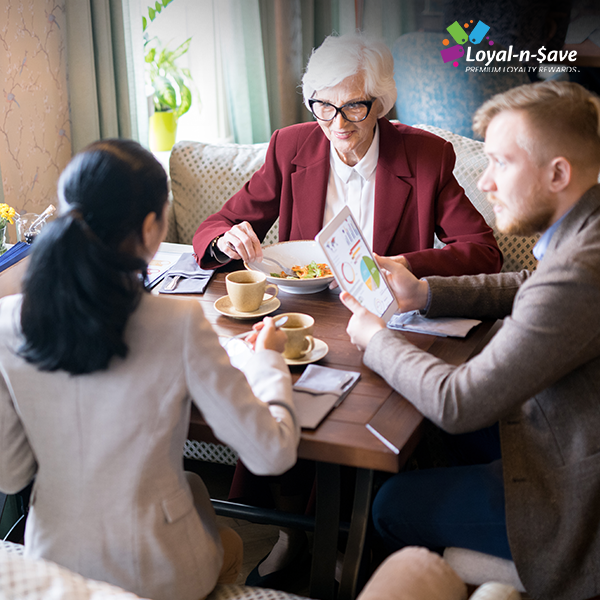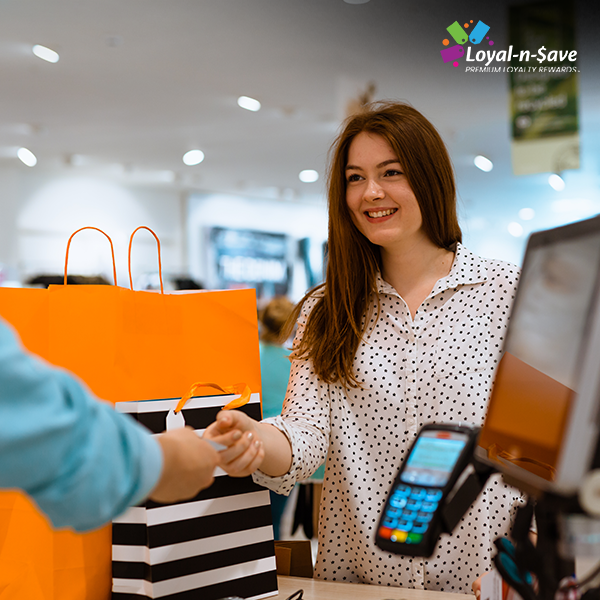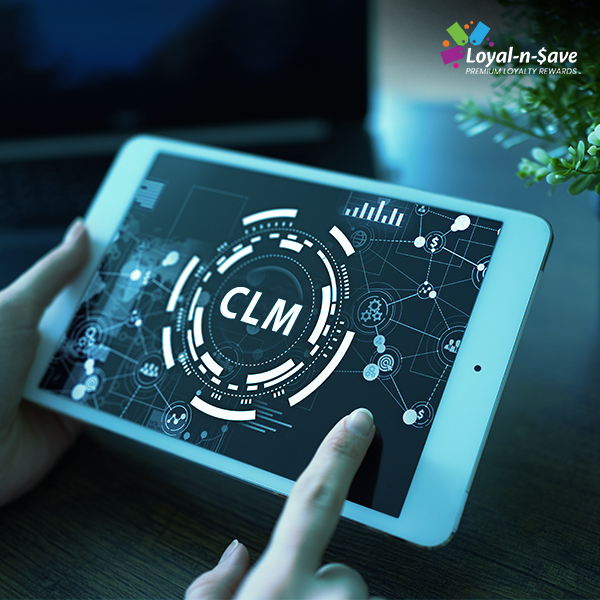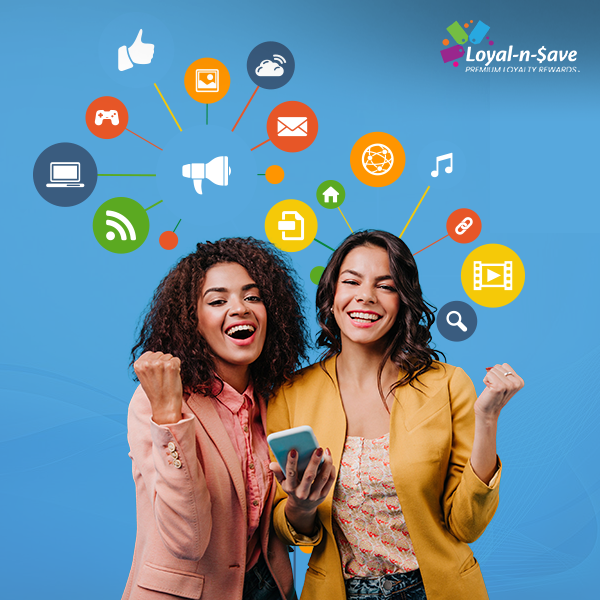The Innovative Ways That Restaurants Are Using Digital Loyalty Programs
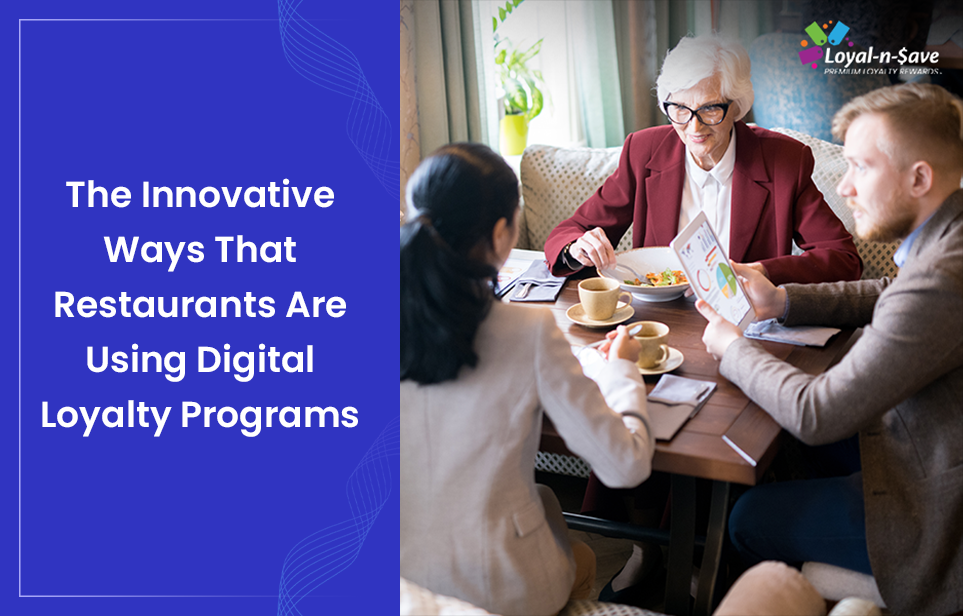
Many of us faced the difficult reality of being confined to our houses without the comfort of friends and family during the COVID-19 pandemic. We discovered new hobbies or learned how to use video chats to adjust to this hardship, but one thing remained constant: the ease of placing an order for our favorite comfort food with just a few clicks or a quick phone call. As a result, while many of us started a new book series or crafted the perfect French onion soup, restaurants witnessed a huge rise in digital sales. This newfound way of life had an impact on everyone, especially our local spots that were seeing more customers coming through their doors thanks to the convenience of digital ordering.
Restaurant digital sales have more than tripled since the onset of the COVID-19 pandemic, as demonstrated by Paytronix’s Annual Order & Delivery Report. These findings are echoed in other research, indicating that restaurants are progressively distinguishing themselves via the digital world. 67% of the average restaurant’s revenue comes from phone or digitally placed orders, according to the July 2021 Restaurant Readiness Index.
However, this isn’t the only strategy restaurants may use to vie for online customers’ attention. The most favored digital feature, according to the RR Index at one point, is loyalty and rewards programs. 16.1% of restaurant patrons said they would be more likely to purchase from a restaurant that offered this feature. Furthermore, 16.7% said the one feature that would motivate them to spend more at any given restaurant is a loyalty or rewards program. What really has to be explored is how restaurants are making use of these programs. Let’s explore some of the best restaurant rewards programs.
Higher frequency and spending among digital customers thanks to digital rewards
Before the pandemic, only a few quick-service businesses, including Starbucks and Chipotle, offered digital restaurant rewards programs, but the pandemic has encouraged many more to follow suit. The newest player in digital loyalty is McDonald’s, a fast-food restaurant giant that is now integrating the MyMcDonald’s Rewards program. Customers can participate in the program through the MyMcDonald’s app and earn points that can later be exchanged for menu items. The next time you go to the drive-thru, order those delicious fries or that strawberry milkshake. You could be earning points towards something more than just happiness!
President and CEO of McDonald’s, Chris Kempczinksi, stressed in the McDonald’s Q3 2021 earnings call how the rewards program had already generated success for the fast-food chain. “It also creates another touch point to increase engagement and take our relationship with customers to more responsive, personalized places,” he said. He continues, “We’re already seeing increased customer satisfaction and higher frequency among digital customers, compared to non-digital.” By December 2021, more than 21 million people had signed up for the program, according to McDonald’s. The program is a huge hit!
Another restaurant that has experienced major success from its digital loyalty program is Chipotle, which has over 29 million members as of July 2022. The rewards program is “consistently able to generate more transactions from light, medium, and high-frequency users,” according to CEO Brian Niccol at one point. Additionally, according to Chipotle, its digital sales account for 39% of its sales, making it a more important driver of overall sales. Similar to this, Taco Bell’s rewards program kept boosting sales of digital goods. On the company’s Q2 2021 earnings call, CEO David Gibbs said that the increased frequency and higher average spend per visit had led to a 35% increase in overall spending for active customers compared to their pre-loyalty behavior.
Some people found that loyalty during the pandemic was a sort of lifesaver, and Starbucks’ rewards program helped the business bounce back from a challenging 2020. Over one million new active Starbucks Rewards members joined the company, according to Starbucks’ Q3 2021 earnings call, bringing the total number of members to over 24 million, accounting for 51% of all purchases made in US Starbucks locations. Starbucks Rewards has 27.4 members according to the Q3 2022 earnings call. In addition, 72% of the sales at all Starbucks locations in the United States come from their mobile order & pay, drive-thru, and delivery services. CEO Kevin Johnson stated that it is “very clear that our rewards program has accelerated our recovery in a meaningful way.”
Create a unique experience for each customer
Of course, the goal of digital restaurant loyalty programs isn’t just to maximize top-line revenue. Restaurants want data so they can use it to tailor experiences and increase customer loyalty. Considering the variety of options available in the quick-service industry and the likelihood that customers will remain loyal to multiple restaurants, this is especially crucial. The “Digital Divide: Mind The Loyalty Gap” report provided by PYMNTS reveals that 64% of customers who participate in loyalty programs do so at various restaurants where they frequently make purchases. This is a pivotal example of having the best of both worlds! The more customers are rewarded with points for their next favorite dish, the better! This is a great way to get people hooked on your restaurant and make them loyal followers. Talk about a win-win situation!
So how exactly are restaurants integrating this data? While many are attempting to improve the drive-thru experience (for instance, leveraging automation to make ordering faster), one related trend is restaurants utilizing data from digital loyalty programs to personalize the experience for their customers. In order to identify members of its Royal Perks program at the drive-thru and display their prior or suggested orders on digital signage boards, Burger King started testing Bluetooth technology in 2021. The theory is that since most customers have a go-to or regular order, presenting this choice results in a more individualized and convenient experience.
Additionally, Panera Bread is developing automatic identification for its “Next Gen” bakery-café, which debuted in late 2021. The restaurant automatically recognizes loyalty members in the drive-thru and when customers enter the restaurant. The restaurant is meant to provide a seamless dining experience for dine-in and dine-out customers. Chief brand and concept officer Eduard Luz said in a statement to CNBC that “Once you are identified, the vision is that we interact and acknowledge and treat you as a person, with preferences. It’s what you expect when you go to a neighborhood café.”
Partially, this strives to counteract the contactless technology that many restaurants utilize, which frequently gives the impression of being somewhat impersonal. Even if the customer decides they want to purchase a fresh pastry using a digital kiosk, Panera attempts to provide a personalized experience that acknowledges the individual instead of an anonymous visitor. This is also in line with the growing desire from customers for multi-channel marketing, which recognizes that even digital customers are not entirely digital and that building long-term loyalty is more likely to result from going the extra mile for customers. The way we order food and drinks has changed over time. In the past, people would physically go up to a counter or stand waiting in line for their orders, but now it’s more convenient than ever with ordering kiosks that allow you to order that favorite berry smoothie of yours (and maybe that cheese danish you’ve been craving!) all from one machine. It’s also tremendously convenient and reassuring for customers, especially because having a kiosk helps maintain the practice of social distancing.
Promoting emotional loyalty that transcends transactions
With the rise in popularity of gamification, restaurants are incorporating it into their digital loyalty programs, in addition to personalization. This can encourage the customer to stay involved in the company’s program and have a lot of fun at the same time. For instance, think about ordering from your favorite local pizzeria on a mobile app and spinning a virtual wheel for a chance for a free large pie or maybe an order of a dozen hot wings as a part of being a loyalty member. You can’t help but be completely enthralled by the multicolored wheel on your phone screen, hoping that it will land on that food item that would complement your Friday evening.
Or, consider this: For a chance to earn in-game badges, rewards, coupons, or raffle tickets, Starbucks Rewards members have been allowed to take part in games like Starland (in honor of the company’s 50th anniversary) and the Starbucks Summer Game. Customers can also unlock prizes more frequently and rapidly with Chipotle’s “Extras” feature instead of having to wait to earn them through transactions. The “Chipotle Race to Rewards” video game, which was made available by Chipotle in June 2021, allowed players to compete for points in order to win prizes including an electric bike and a 2021 Tesla Model 3.
Along with brief yet major promotions like this, Chipotle Rewards members may use points to buy a number of other menu items and Chipotle-branded merchandise, as well as to make donations to the company’s charitable partners, which include the Farmlink Project. Overall, it seems that there is a growing understanding of the importance of building customer loyalty based on emotions and experiences rather than just transactional loyalty as the level of competition in the industry rises, and restaurants are getting more inventive in their approaches to doing this.
What it ultimately comes down to is personalization, with restaurants utilizing to attract and connect with customers in a genuine way. Dunkin’ Donuts, which sends “Year in Review” emails to DD Perks members based on their yearly purchases and activity, is another well-known example of this. The email helps in creating a narrative around the individual customer, cultivating a sense of value on the part of the business, which in turn encourages ongoing loyalty.
Despite the hardships encountered during the undoubtedly intense and perplexing COVID-19 period, customers were treated to the best of both worlds during quarantine: their favorite burrito and a complimentary dessert dish to top off their evening thanks to loyalty programs for restaurants. Who doesn’t enjoy receiving free food? Imagine being able to serve your customers their favorite comfort food made with the family recipe and providing them with the chance to earn rewards towards future orders, encouraging them to remain devoted to your restaurant (talk about the best form of flattery!).
Ready to take the next step and create your own loyalty program? Loyal-n-Save is here for you! We help restaurants of all sizes maintain their customer base with customized, easy-to-use programs built around their goals. Get in touch with us today to schedule a consultation and let one of our specialists perform a demo for you today!
This article was written by Loyal-n-Save, an omni-channel customer loyalty solution for retailers looking to increase customer retention and new customer acquisition.
Posted on Aug 18, 2022



